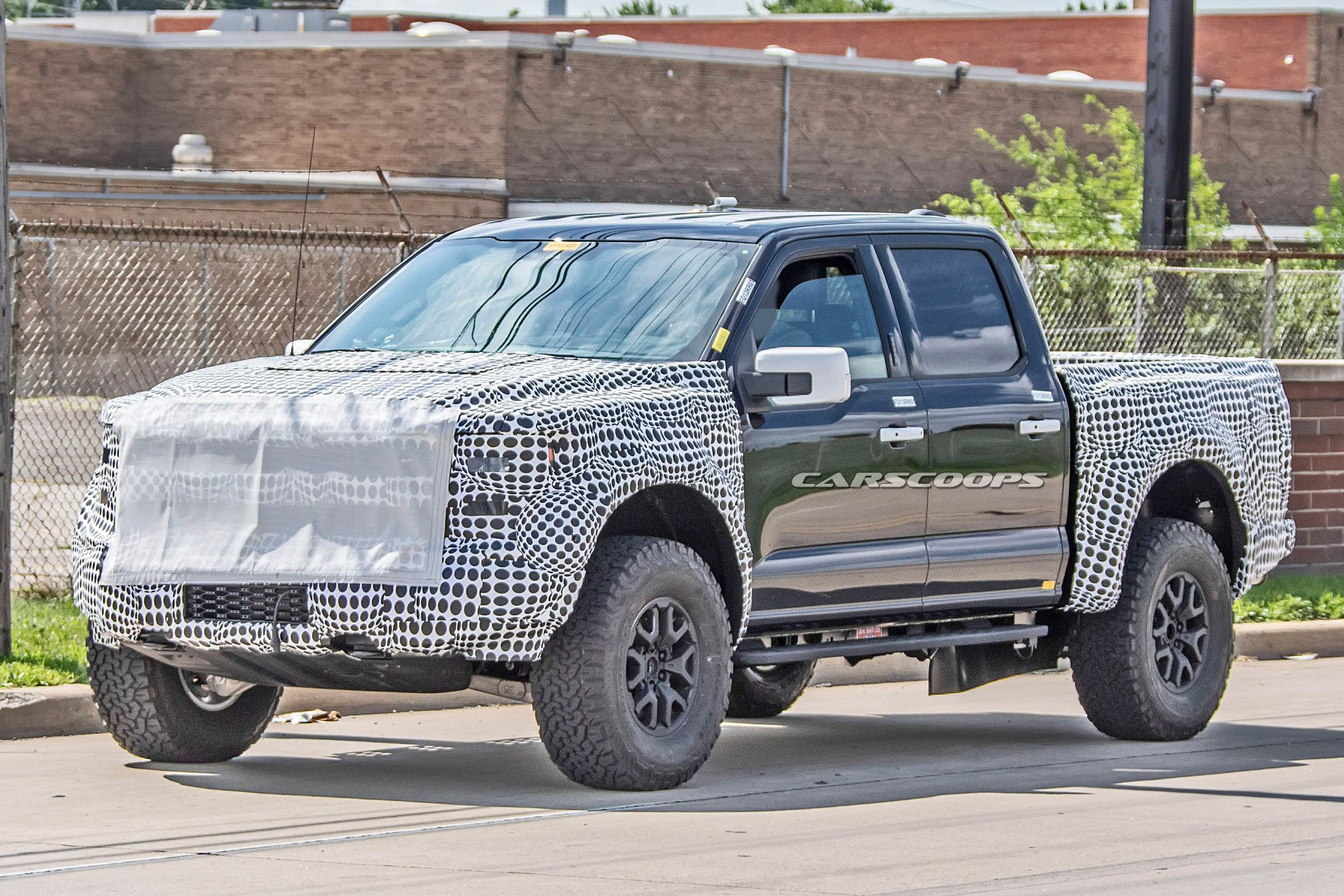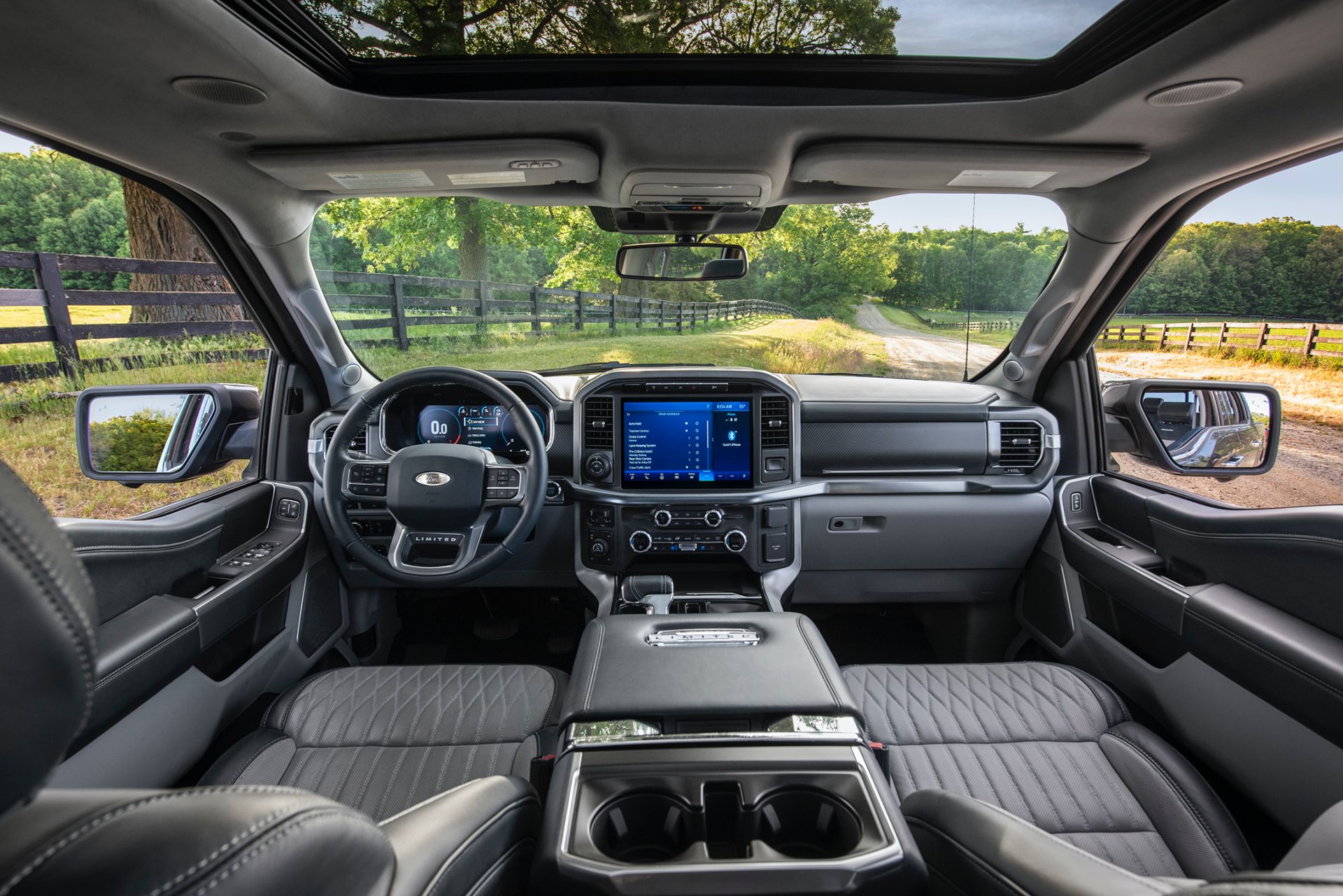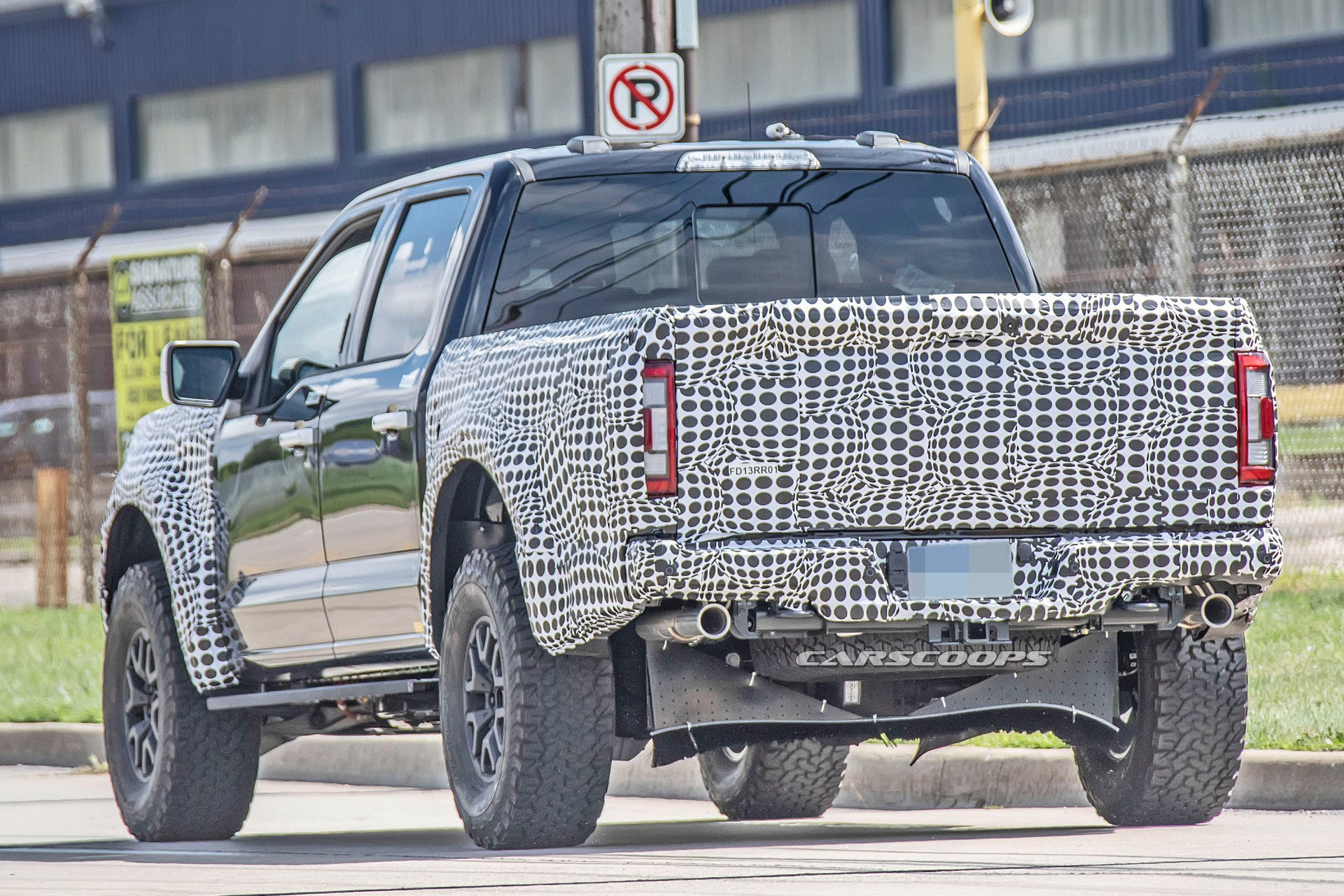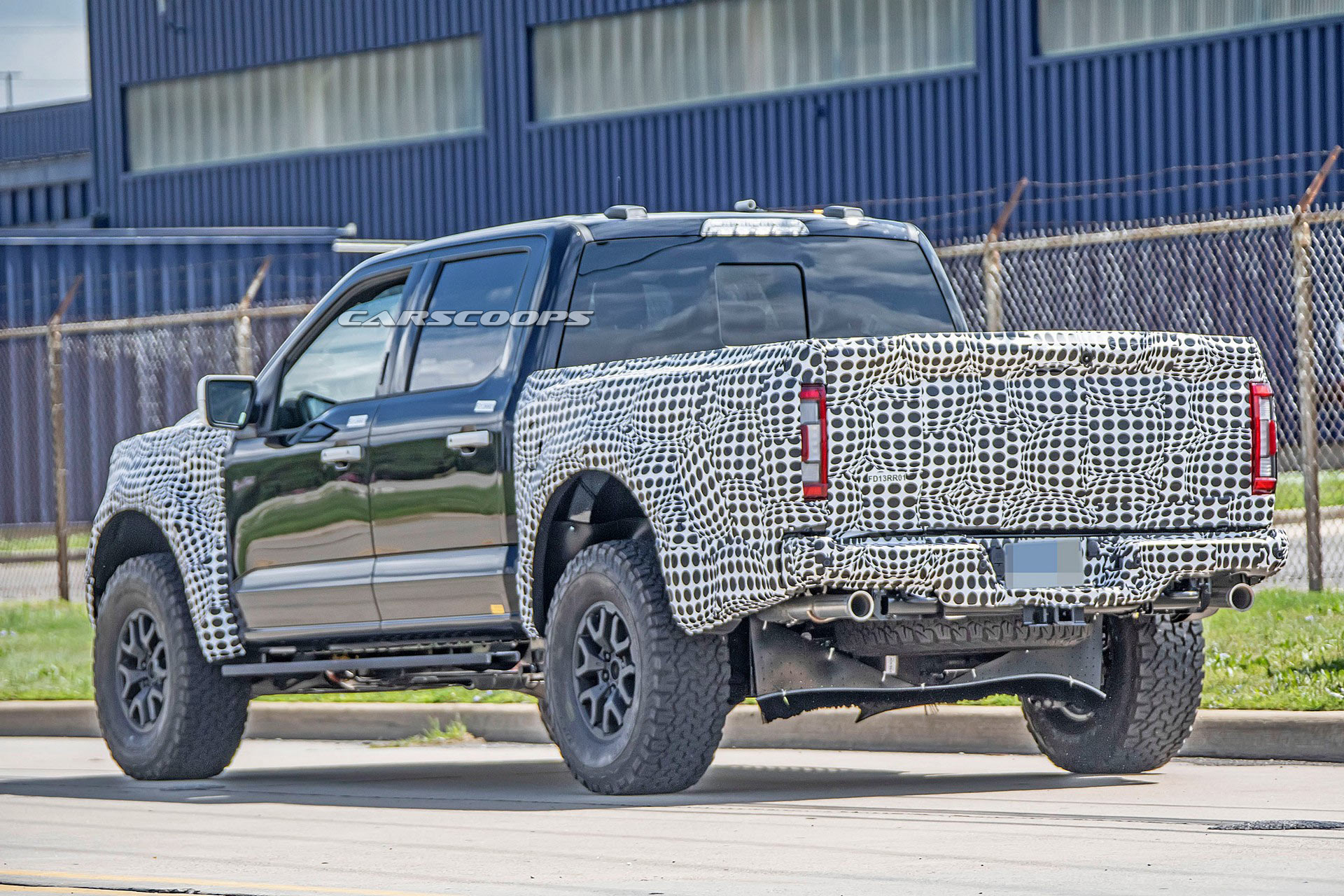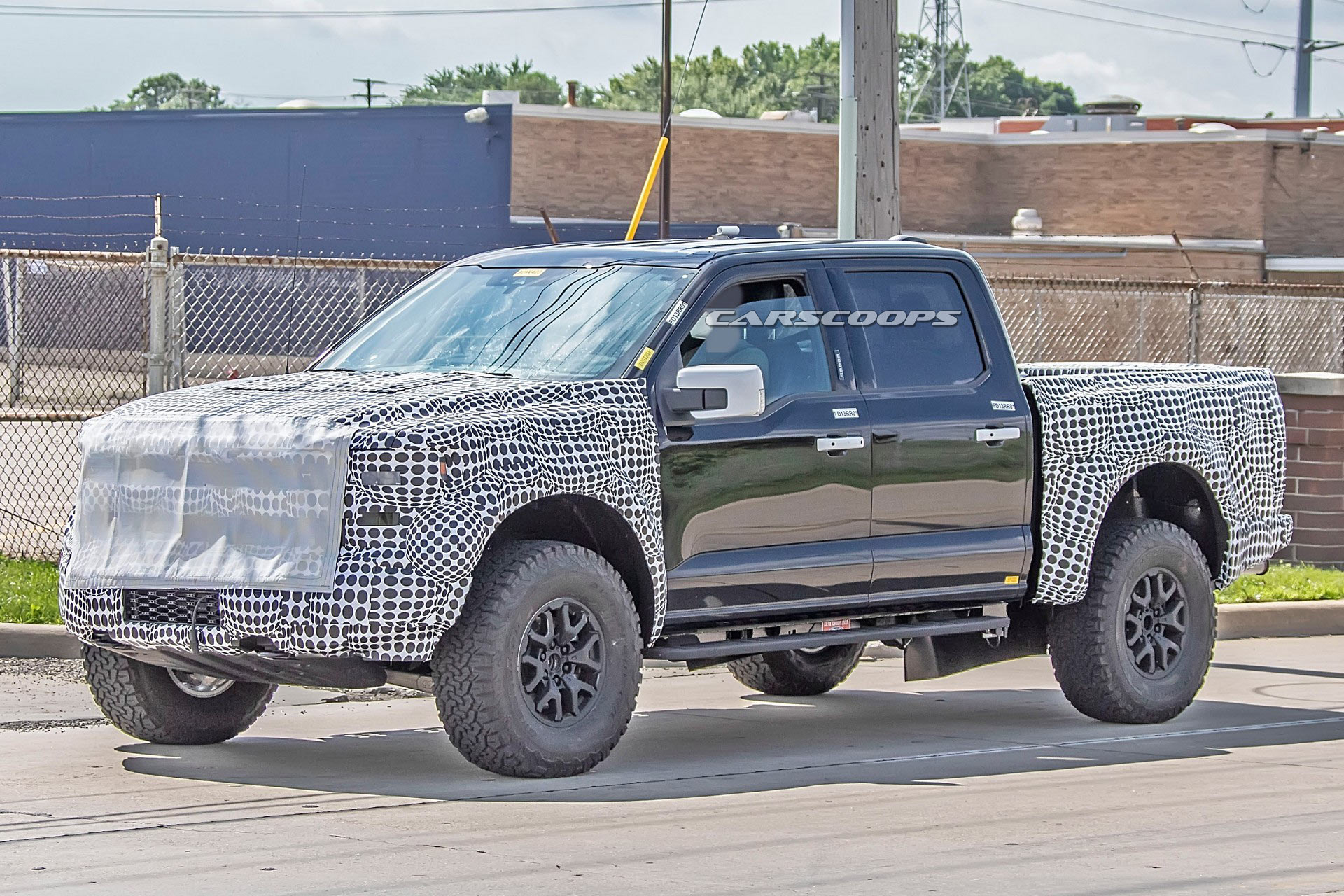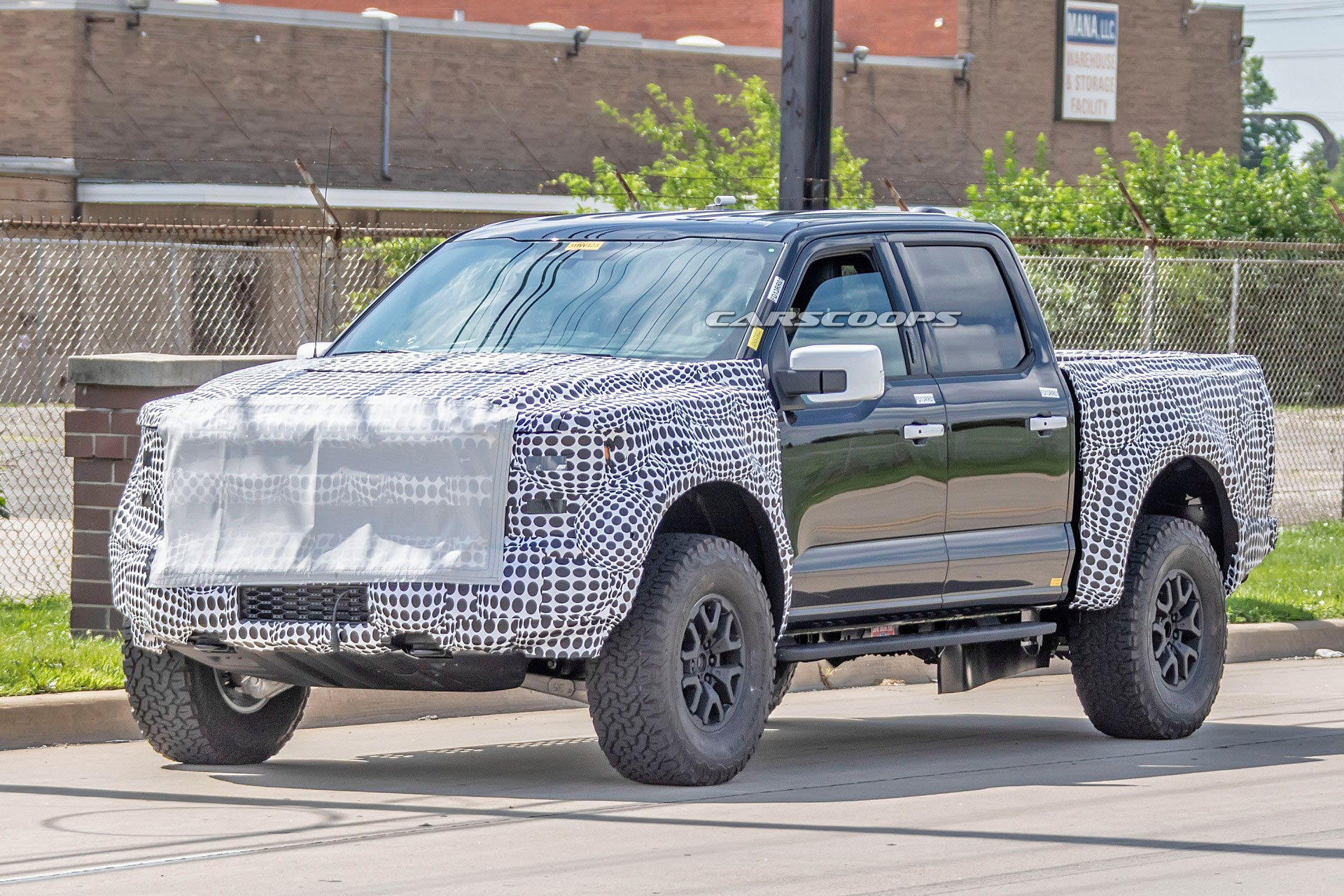Ford has released the first teaser image of the 2021 F-150 Raptor, ahead of its debut on February 3rd at 11 a.m. EST.
While the image isn’t very revealing, it shows the redesigned truck will have an evolutionary grille with prominent “FORD” lettering.
We can also see a familiar mesh pattern as well as wider grille-mounted lights. Additional details are hard to make out, but there’s a contrasting black bumper and what appears to be decals on the hood.
Also Watch: This Ford F-150 Raptor Seems To Have A Rumbling V8
Ford is staying light lipped on specifics, but previous spy photos have shown a beefy front skid plate and recovery hooks. The off-road goodies won’t end there as the model will have pronounced fender flares and BFGoodrich All-Terrain T/A tires.
The big news is the truck’s suspension, which trades rear leaf springs for more modern coils. This should result in a more comfortable ride and the change also allowed engineers to add a new structural brace that attaches to the rear axle.
Speaking of underbody changes, the exhaust has been rerouted and now features a straighter exit. More importantly, it features higher mounting points for improved clearance.
We haven’t gotten a glimpse inside the Raptor, but the model will benefit from the updates applied to standard F-150. As a result, the truck should have a 12-inch digital instrument cluster, a 12-inch SYNC 4 infotainment system and higher quality materials.
The twin-turbo 3.5-liter V6 is expected to carryover with some modifications for improved performance. There’s no word on numbers at this point, but the engine currently develops 450 hp (336 kW / 456 PS) and 510 lb-ft (691 Nm) of torque.
It could eventually be joined by a supercharged 5.2-liter V8 sourced from the Mustang Shelby GT500. Rumors have suggested it will be used in an F-150 Raptor R and produce more than 700 hp (522 kW / 710 PS).
The Raptor R is slated to battle the Ram 1500 TRX, which has a supercharged 6.2-liter V8 engine pumping out 702 hp (523 kW / 712 PS) and 650 lb-ft (880 Nm) of torque. It enables the model to accelerate from 0-60 mph (0-96 km/h) in just 4.5 seconds.





